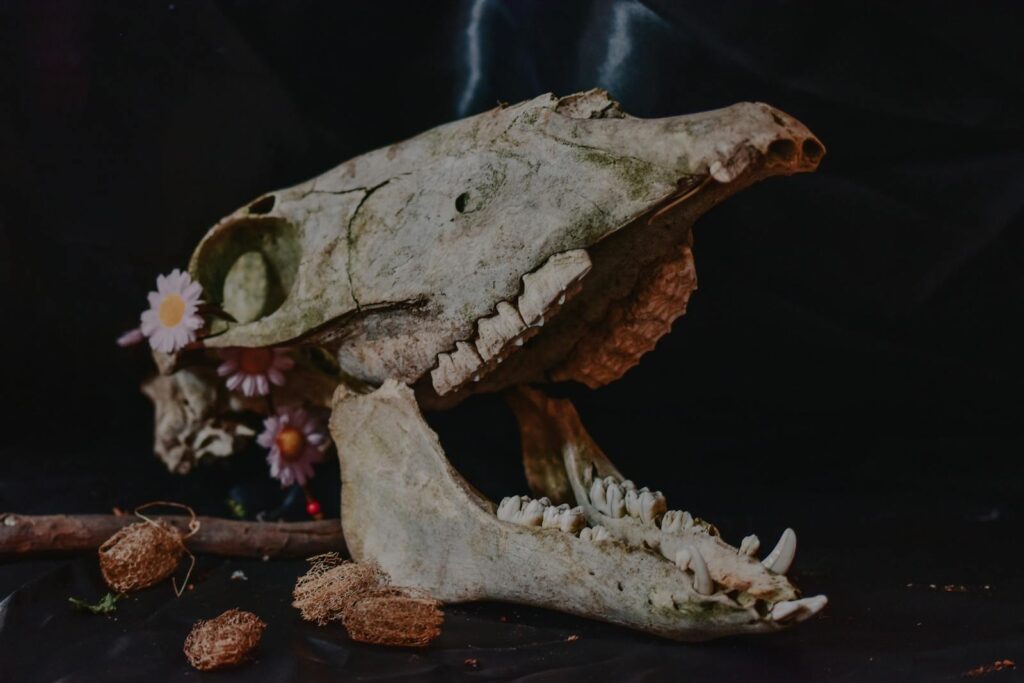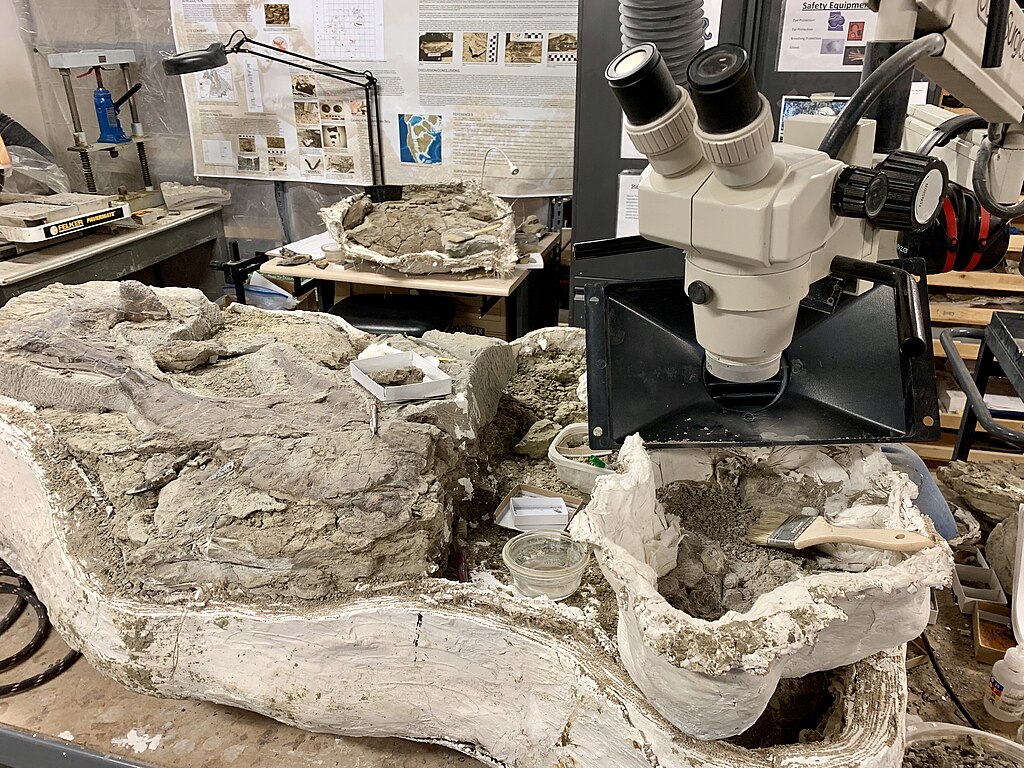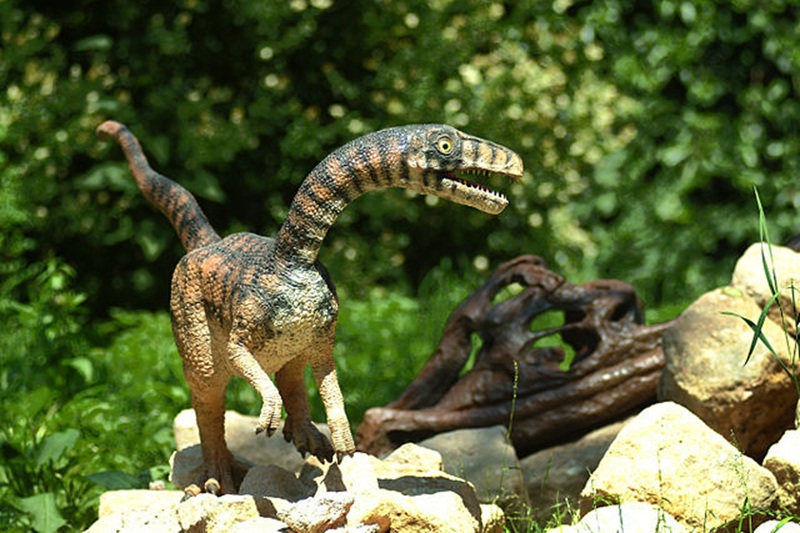Dinosaurs dominated Earth for over 165 million years, leaving behind a fossil record that continues to fascinate scientists and the public alike. While we often focus on their size, behavior, and extinction, one question remains particularly intriguing: did these magnificent creatures suffer from diseases and illnesses like modern animals do? Recent paleontological discoveries have revealed compelling evidence that dinosaurs indeed experienced various ailments, from infections and cancer to arthritis and parasitic invasions.
These ancient health issues, preserved in fossilized bones and tissues, provide remarkable insights into dinosaur biology, immune systems, and the evolutionary history of disease itself. By studying pathological specimens, scientists can better understand not only how dinosaurs lived but also how they coped with sickness and injury in their prehistoric world.
The Preservation of Disease in Fossils

Disease evidence in dinosaur fossils comes primarily from abnormalities preserved in bones, as soft tissues rarely survive the fossilization process. When dinosaur bones fossilize, they preserve a remarkable record of any pathological conditions that affected the animal during its lifetime. Healed fractures, bone infections, arthritis, and even cancerous growths can leave distinctive marks that remain visible millions of years later. Paleopathology—the study of ancient diseases—relies on careful examination of these abnormalities, comparing them with similar conditions in modern animals to determine their cause.
The fossilization process itself is extraordinarily selective, requiring specific conditions that allow organic remains to mineralize before decomposing completely, making each pathological specimen especially valuable. Scientists must distinguish between actual diseases, injuries that occurred during the dinosaur’s life, and taphonomic artifacts—changes that happened after death during the fossilization process.
Evidence of Trauma and Healing

One of the most common pathological findings in dinosaur fossils is evidence of trauma and subsequent healing. Numerous specimens show signs of broken bones that had begun to heal before the animal died, indicating the dinosaur survived the initial injury. A famous example is “Sue,” the Tyrannosaurus rex at Chicago’s Field Museum, whose skeleton shows multiple healed injuries, including broken ribs and a damaged shoulder. These healing patterns demonstrate that dinosaurs possessed effective immune systems capable of fighting infection and repairing damaged tissues.
The presence of calluses around fracture sites—similar to those seen in modern animals—suggests dinosaurs experienced comparable healing processes to today’s vertebrates. In some cases, bones show evidence of severe trauma that likely affected the animal’s mobility and hunting abilities, yet healing indicates they survived for extended periods despite these injuries, possibly suggesting social structures where injured individuals received protection or assistance from others in their group.
Bacterial Infections in Dinosaur Bones

Osteomyelitis, a bacterial infection of the bone, appears with remarkable frequency in the dinosaur fossil record. This condition creates distinctive patterns in bone tissue, including abnormal bone growth, porous textures, and drainage channels called cloacae, where pus would have discharged from the infected area. Paleontologists have identified osteomyelitis in multiple dinosaur species, including hadrosaurs, theropods, and sauropods. One particularly striking example comes from a Compsognathus longipes specimen that shows severe infection in its hand bones.
The presence of these infections reveals important information about dinosaur immune systems, suggesting they faced similar bacterial challenges as modern animals. Bacteria responsible for osteomyelitis in the Mesozoic era were likely evolutionary ancestors of those causing similar infections in contemporary wildlife and humans. These infections would have caused significant pain, swelling, and potentially limited mobility in affected dinosaurs, possibly contributing to their eventual deaths.
Cancer and Tumors in Prehistoric Reptiles

Contrary to some popular misconceptions, dinosaurs were not immune to cancer. Paleontologists have identified several examples of benign and malignant tumors in fossilized dinosaur remains. In 2020, scientists diagnosed a malignant bone cancer called osteosarcoma in a Centrosaurus apertus, a horned dinosaur that lived approximately 76 million years ago. The tumor was found in the fibula (lower leg bone) and represented the first confirmed case of malignant cancer in a dinosaur.
Other specimens show evidence of hemangiomas (benign blood vessel tumors) and osteomas (benign bone growths). These discoveries demonstrate that cancer is not merely a modern disease but has affected vertebrates throughout evolutionary history. The presence of these conditions in dinosaurs helps scientists understand the antiquity of cancer as a biological phenomenon and may provide insights into its fundamental causes. Studying these ancient cases of cancer might even contribute to our understanding of cancer’s evolution and potentially inform modern medical research.
Arthritis and Joint Diseases

Arthritis appears to have been relatively common among dinosaurs, particularly in older individuals. Paleontologists have documented numerous cases of osteoarthritis, showing the characteristic bone spurs, joint erosion, and fusion that occur when cartilage breaks down. One notable example comes from a Diplodocus skeleton showing severe arthritis in its spine, which would have caused significant pain and restricted movement. Allosaurus specimens frequently show arthritic conditions in their jaw joints, suggesting these predators often suffered from painful feeding mechanisms.
These findings indicate that dinosaurs experienced degenerative joint diseases similar to those affecting modern animals and humans. The presence of arthritis in dinosaur fossils provides valuable information about their longevity, as these conditions typically develop over long periods and worsen with age. By studying the patterns and progression of arthritis in various dinosaur species, scientists can make inferences about their lifespan, activity levels, and the physical challenges they faced as they aged.
Dental Disease and Oral Health Issues

Dinosaur teeth and jaw bones frequently show evidence of dental pathologies, offering insights into their feeding habits and oral health. Tooth abscess cavities appear in many specimens, particularly among carnivorous dinosaurs whose teeth were subjected to significant stress during feeding. A notable example comes from a Tyrannosaurus rex skull that shows signs of a severe infection that created drainage channels through the bone of the lower jaw. Herbivorous dinosaurs commonly exhibit wear patterns and occasional dental abnormalities related to their constant grinding of plant material.
Some ceratopsian fossils show evidence of periodontal disease, with bone loss around tooth sockets similar to advanced gum disease in modern animals. These dental pathologies would have affected feeding efficiency and potentially caused significant pain, possibly contributing to malnutrition and weakened physical condition in affected individuals. The study of dinosaur dental health provides valuable information about their diets, feeding mechanisms, and the evolution of dental structures across different lineages.
Parasitic Infections in Dinosaurs

Evidence suggests dinosaurs suffered from various parasitic infections, though direct evidence of soft-tissue parasites rarely survives in the fossil record. Some fossilized coprolites (fossilized feces) contain parasite eggs, indicating intestinal parasitic infections similar to those affecting modern reptiles and birds. In 2006, researchers identified holes in the jaw bones of a Tyrannosaurus rex that closely resembled those caused by Trichomonas infections, a parasite that affects modern birds including pigeons and falcons.
More recently, scientists discovered what appears to be evidence of blood parasites in fossilized dinosaur tissues preserved in exceptionally fine detail. These findings suggest that host-parasite relationships established during the Mesozoic era have continued to evolve alongside their hosts into the present day. Complex parasitic life cycles likely existed in dinosaur ecosystems, potentially involving multiple host species and affecting dinosaur health in ways similar to how modern parasites impact wildlife populations today.
Respiratory Ailments and Evidence

Respiratory infections appear to have afflicted dinosaurs based on pathological evidence found in some specimens. Particularly compelling evidence comes from sauropod fossils showing abnormal air sac structures in vertebrae, potentially indicating respiratory infections similar to those affecting modern birds. In 2022, researchers identified what appears to be evidence of a respiratory infection in a specimen of Diplodocus, with unusual bone growth patterns in vertebrae where air sacs would have connected to the respiratory system.
Birds, as living dinosaur descendants, frequently suffer from fungal infections like aspergillosis that affect their complex respiratory systems, suggesting their dinosaur ancestors may have faced similar challenges. The dinosaur respiratory system, particularly in theropods and sauropods, included extensive air sacs similar to those in modern birds, creating vulnerability to infections throughout these air-filled spaces. Respiratory diseases would have been particularly debilitating for active dinosaurs, potentially limiting their endurance and making them more vulnerable to predation or starvation.
Congenital Deformities and Developmental Issues

Fossil evidence indicates dinosaurs sometimes suffered from congenital deformities and developmental abnormalities. Specimens have been discovered with fused vertebrae that weren’t caused by injury but instead represent developmental abnormalities that occurred before birth or during early growth. Some fossils show evidence of scoliosis and other spinal deformities that would have been present from a young age. A juvenile Diplodocus specimen displays an unusual skull shape, suggesting a congenital deformity that the animal survived with for some time.
These examples demonstrate that dinosaurs, like modern animals, experienced genetic and developmental irregularities that affected their anatomy and potentially their behavior and survival. The presence of individuals who survived for extended periods despite significant deformities suggests these animals could adapt to their limitations or possibly received support within social groups. Studying these abnormalities provides insights into dinosaur development, genetics, and the evolutionary forces that shaped these ancient creatures.
Disease Transmission in Dinosaur Populations

Understanding how diseases spread among dinosaur populations requires combining fossil evidence with knowledge of modern animal epidemiology. Some fossil sites contain multiple individuals of the same species with similar pathological conditions, suggesting potential disease outbreaks. Mass mortality sites where numerous dinosaurs died simultaneously might represent catastrophic disease events similar to those affecting modern wildlife populations. Social dinosaurs that lived in herds or packs would have been particularly vulnerable to contagious diseases, just as social mammals today face increased disease transmission risks.
Evidence of waterborne diseases may be preserved in fossils from specimens that frequented shared water sources, which often serve as transmission points for pathogens. Studying these patterns helps paleontologists reconstruct aspects of dinosaur behavior and ecology that wouldn’t be apparent from anatomy alone. Disease dynamics may have played important roles in dinosaur population regulation, territoriality, and migration patterns, though these effects are challenging to detect directly in the fossil record.
Comparing Dinosaur Diseases to Modern Animals

Many pathological conditions observed in dinosaur fossils have direct parallels in modern animals, particularly birds and reptiles. This continuity isn’t surprising given that birds are living dinosaurs, representing the surviving lineage of theropod dinosaurs. Osteomyelitis affects modern reptiles and birds in ways remarkably similar to infections seen in dinosaur bones, often producing identical bone deformities and drainage channels.
Arthritic conditions in aging dinosaurs closely resemble those in elderly elephants, rhinos, and other large vertebrates, suggesting similar biomechanical stresses and aging processes. The patterns of healed fractures in dinosaur bones follow healing trajectories nearly identical to those in modern animals, indicating conserved physiological responses to injury across millions of years of evolution.
These similarities allow paleontologists to apply knowledge from modern veterinary medicine when interpreting ancient pathologies, while also highlighting the continuity of biological processes throughout vertebrate evolution. By comparing dinosaur diseases to those affecting their closest living relatives, scientists can make more confident inferences about the progression, symptoms, and impacts of diseases that affected these extinct animals.
Implications for Dinosaur Behavior and Evolution

Disease evidence in fossils provides unique insights into dinosaur behavior, social structures, and evolutionary adaptations. Specimens showing long-term survival with significant pathologies suggest that some dinosaur species may have exhibited social behaviors that supported injured or sick individuals. The common occurrence of certain diseases might indicate evolutionary adaptations to counter these ailments, similar to how modern species develop resistance to prevalent pathogens.
Evidence of parasitism in dinosaur fossils demonstrates that the complex evolutionary arms race between hosts and parasites was well established during the Mesozoic era. Disease pressures likely served as important selective forces shaping dinosaur evolution, potentially influencing immune system development, social behaviors, and physical adaptations.
The survival of individuals with serious pathological conditions indicates that dinosaurs possessed remarkable resilience and adaptability, challenging simplified views of these animals as simplistic or fragile organisms. Studying disease in dinosaurs helps complete our understanding of ancient ecosystems, where pathogens played crucial roles in population dynamics and evolutionary trajectories just as they do in modern environments.
Modern Techniques in Studying Ancient Diseases

Advances in technology have revolutionized the study of disease in dinosaur fossils, allowing for more detailed and accurate diagnoses. CT scanning and 3D modeling enable scientists to examine internal bone structures without damaging precious specimens, revealing pathologies that would remain hidden to visual inspection alone. Histological analysis of thin sections of fossilized bone provides microscopic evidence of diseases, showing cellular-level changes caused by infections or cancer. Chemical analysis techniques can sometimes detect traces of biological compounds associated with specific diseases, even millions of years after fossilization. Comparative databases of pathologies in modern animals help researchers make more accurate identifications of similar conditions in fossil specimens.
Interdisciplinary collaboration between paleontologists, veterinarians, and medical professionals has become increasingly important in this field, bringing multiple perspectives to the interpretation of ancient diseases. These technological and methodological advances continue to expand our understanding of dinosaur pathology, revealing new cases and refining our interpretation of previously studied specimens.
Future Directions in Dinosaur Paleopathology

The study of disease in dinosaurs continues to evolve as new fossils are discovered and analytical techniques improve. Emerging technologies like synchrotron radiation analysis offer unprecedented opportunities to examine the chemical composition of pathological tissues, potentially identifying molecular signatures of specific diseases. Ancient DNA analysis, while extremely challenging in dinosaur fossils, may eventually provide direct evidence of pathogens that affected these animals. Growing fossil collections worldwide increase the statistical power of paleopathological studies, allowing researchers to determine whether certain conditions were truly common or merely isolated cases.
Interdisciplinary approaches combining paleontology with epidemiology and evolutionary biology promise to reveal patterns of disease evolution across the Mesozoic era and beyond. Citizen science initiatives involving amateur fossil collectors help identify and report potential pathological specimens that might otherwise go unnoticed. As our understanding of dinosaur diseases improves, we gain not only scientific knowledge about these fascinating creatures but also deeper insights into the ancient origins and evolutionary history of diseases that continue to affect animals and humans today.
Conclusion

The evidence is clear: dinosaurs, like all complex organisms, experienced a wide range of diseases and health challenges throughout their long evolutionary history. The fossil record reveals that these magnificent creatures suffered from infections, cancer, arthritis, parasites, and various other ailments that affected their lives and likely influenced their behavior.
These ancient pathologies demonstrate remarkable similarities to conditions affecting modern animals, highlighting the continuity of biological processes across vast spans of evolutionary time. As technology advances and more pathological specimens are discovered and analyzed, our understanding of dinosaur health and disease continues to deepen.
This growing field of study not only enhances our knowledge of these fascinating prehistoric creatures but also provides valuable context for understanding the evolution of disease itself. The next time you imagine dinosaurs roaming prehistoric landscapes, remember that they navigated their world not only as mighty predators and gentle giants but also as living beings that experienced sickness, pain, and recovery—just as animals do in our world today.




